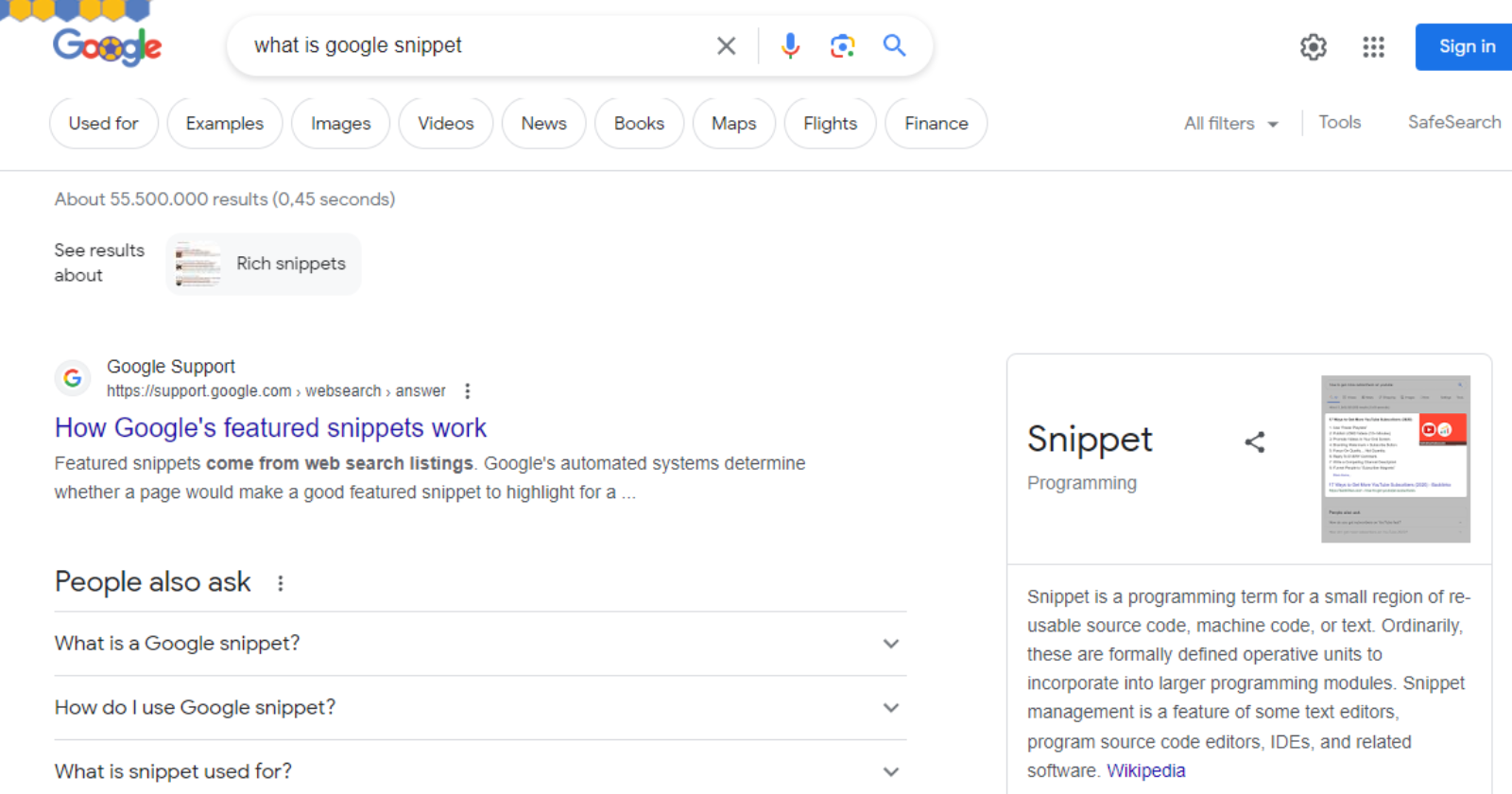In the digital age, the world of education has expanded beyond traditional classrooms. With the advent of technology, creating and selling online courses has become a popular avenue for both educators and entrepreneurs. By harnessing the potential of the internet, you can now share your expertise with a global audience, foster valuable connections, and unlock new opportunities for growth.
Whether you are an experienced educator, an industry expert, or someone passionate about a particular subject, creating an online course can be a transformative experience for both you and your learners. In this comprehensive guide, we will walk you through the process of crafting an engaging and impactful online course that resonates with your audience and establishes your authority.
Understanding the Basics of Online Course Creation
Before diving into the nitty-gritty of crafting your online course, let’s explore the fundamental aspects that form the foundation of successful course development.
Identifying Your Expertise and Target Audience
Create an Online Course: Your Gateway to Sharing Knowledge and Success
The first step in creating an online course is to identify your expertise and passion. What knowledge or skills do you possess that can benefit others? Define your niche and understand the specific needs of your target audience. This will help you tailor your course content to address their pain points effectively.
Setting Clear Learning Objectives
One of the key elements of a successful online course is setting clear and measurable learning objectives. What do you want your learners to achieve by the end of the course? Define the outcomes you expect from your students, and structure your content around these objectives to ensure a focused and meaningful learning experience.
Selecting the Right Online Course Platform
Choosing the right online course platform is crucial for delivering a seamless learning experience. Research and compare various platforms based on factors like user-friendliness, features, pricing, and marketing capabilities. Opt for a platform that aligns with your goals and allows you to showcase your content effectively.
Crafting Engaging Course Content
Engaging and interactive content is the heart of a successful online course. LSI Keywords like “create a course online” and “develop e-learning content” can enhance your content’s visibility. Utilize a variety of content formats such as videos, quizzes, downloadable resources, and discussions to cater to different learning styles.
Designing an Intuitive Course Structure
The way your course is organized plays a vital role in learner retention. Create a logical and intuitive course structure, dividing the content into modules or lessons. Ensure smooth navigation and make it easy for learners to track their progress.
Incorporating Assessments and Feedback
Assessments are valuable tools for gauging learner understanding and progress. Integrate quizzes, assignments, and practical exercises throughout the course. Additionally, encourage feedback from learners to continuously improve your course and meet their expectations.
Promoting Your Online Course
Creating a compelling course is just the first step. Marketing your online course is equally important to reach your target audience. Utilize various marketing channels, including social media, email campaigns, and partnerships, to attract potential learners and build a community around your course.
Best Course Creation Platforms: Unleashing the Power of e-Learning
In this section, we will explore the best course creation platforms that have proven to be user-friendly, feature-rich, and effective in delivering top-notch online courses. These platforms provide everything an educator or entrepreneur needs to create, manage, and market courses. Let’s dive in and explore their offerings:
1. Udemy: Empowering Instructors and Learners Alike
Udemy is one of the most popular and comprehensive course creation platforms on the internet. It boasts an extensive library of courses across various disciplines, catering to both learners and instructors. With its user-friendly interface and powerful tools, Udemy empowers educators to design interactive courses easily. Whether you want to teach a skill, share knowledge, or build a business around your expertise, Udemy is an excellent choice.
Key Features:
- Course Management Tools: Organize course content, quizzes, and assignments seamlessly.
- User Engagement: Facilitate discussions and foster a sense of community among learners.
- Global Reach: Access a vast audience of learners from around the world.
2. Teachable: Your All-in-One Teaching Platform
Teachable is a versatile course creation platform that allows educators to build their branded online schools. With an emphasis on customization, it provides a professional learning environment for students. Teachable’s marketing tools enable instructors to promote their courses effectively, reaching a wider audience.
Key Features:
- Custom Branding: Design your school with your branding elements for a consistent look and feel.
- Advanced Analytics: Gain valuable insights into student engagement and course performance.
- Secure Payments: Hassle-free payment processing and revenue tracking.
3. Thinkific: Empower Your Teaching Journey
Thinkific is a comprehensive platform that caters to beginners and experienced course creators alike. It offers an intuitive course builder, making it easy to create engaging multimedia courses. Thinkific’s user-friendly interface allows instructors to focus on their content rather than technical complexities.
Key Features:
- Multimedia Support: Integrate videos, audio, and presentations into your courses effortlessly.
- Gamification: Enhance student motivation with badges, certificates, and quizzes.
- Marketing Integration: Seamlessly connect with email marketing tools to boost course sales.
4. LearnWorlds: Interactive and Engaging Learning Experiences
LearnWorlds stands out for its interactive course design and engaging learning experiences. It provides a wide range of interactive features to increase student participation and retention. With its built-in social community, students can interact, collaborate, and learn together.
Key Features:
- Interactive Video Quizzes: Assess student comprehension with in-video quizzes.
- Social Learning: Encourage collaboration and knowledge sharing among learners.
- Mobile-Friendly: Access courses on any device for a seamless learning experience.
5. Kajabi: Empowering Entrepreneurs to Teach and Sell
Kajabi is more than just a course creation platform; it’s an all-in-one business solution for digital entrepreneurs. Instructors can create courses, build marketing funnels, and even host webinars—all on the same platform. Kajabi streamlines the process of transforming knowledge into a profitable online course.
Key Features:
- Pipeline Creation: Design high-converting sales and marketing pipelines effortlessly.
- Membership Sites: Build exclusive membership communities for recurring revenue.
- Email Marketing: Nurture leads and engage with students through automated email campaigns.
6. Podi A Simple and Effective Course Creation Platform
Podia is known for its simplicity and effectiveness. Whether you are a creator, writer, or artist, Podia provides a user-friendly interface to create and sell your courses, digital products, and memberships. Its straightforward approach allows you to focus on your content and connect with your audience easily.
Key Features:
- Zero Transaction Fees: Keep all your earnings without any hidden charges.
- Integrated Messaging: Communicate with students directly through the platform.
- Unlimited Everything: No limits on courses, products, or students.
7. Academy of Mine: A Comprehensive LMS for Serious Educators
Academy of Mine caters to serious educators and institutions looking to create and sell professional courses. It offers powerful learning management system (LMS) capabilities, making it suitable for large-scale training programs and corporate e-learning.
Key Features:
- Corporate Training Solutions: Tailor-made solutions for enterprises and organizations.
- Custom Development: Create fully customized e-learning platforms with support from experts.
- Advanced Reporting: Track student progress and performance with detailed analytics.
8. Ruzuku: Simplifying Online Course Creation
Ruzuku is designed for simplicity and ease of use. It enables instructors to create and deliver online courses without technical hurdles. Ruzuku’s emphasis on user-friendly design and support makes it an excellent choice for beginners.
Key Features:
- Content Drip: Release course content gradually to keep students engaged.
- Community Building: Foster a sense of community with group discussions and live webinars.
- Quizzes and Surveys: Assess student learning and gather valuable feedback.
9. LearnDash: A Powerful LMS Plugin for WordPress
LearnDash is a popular learning management system plugin for WordPress. It offers extensive customization options and integrations with various plugins, making it a preferred choice for WordPress users.
Key Features:
- Flexible Course Builder: Design courses with lessons, topics, and quizzes as per your preference.
- User Management: Easily manage students, track progress, and issue certificates.
- Gamification: Encourage student participation with points, awards, and certificates.
10. ClickFunnels: Building Effective Sales Funnels
ClickFunnels, although not exclusively a course creation platform, excels at building sales funnels and landing pages for selling courses and digital products. Its drag-and-drop interface simplifies the process of creating high-converting sales pages.
Key Features:
- Funnel Templates: Choose from a variety of pre-designed templates for sales funnels.
- One-Click Upsells: Boost revenue with one-click upsells and order bumps.
- A/B Testing: Optimize your funnels with split testing for better results.
Crafting Your Online Course: Step-by-Step Guide
1. Understanding Your Audience and Niche
Before diving into course creation, it’s crucial to identify your target audience and choose a niche that aligns with your expertise. Understanding your audience’s needs and preferences will help you tailor your course content to meet their specific requirements.
- Defining Your Target Audience: Use surveys, market research, and social media interactions to identify your ideal audience. Analyze their interests, pain points, and goals to create relevant content.
- Selecting the Right Niche: Focus on your area of expertise and passion. Choose a niche that has demand but is not oversaturated, ensuring your course stands out.
2. Setting Clear Learning Objectives
Well-defined learning objectives form the backbone of an effective online course. They provide direction to your content and help learners understand what they can achieve through your course.
- Crafting Learning Objectives: Develop clear and measurable learning objectives for each module or lesson. Use action verbs to describe what learners will be able to do after completing the course.
- Aligning Objectives with Content: Ensure that your course content directly aligns with the learning objectives, offering a cohesive learning experience.
3. Content Creation and Organization
Compelling and well-structured content is the key to engaging learners and keeping them motivated throughout the course. Organize your content logically to facilitate learning progression.
- Creating Engaging Content: Utilize a mix of text, visuals, videos, and interactive elements to make your course engaging and interactive.
- Designing Course Modules: Divide your content into manageable modules, each focusing on a specific topic or skill.
- Sequencing Content: Arrange modules in a logical order to build upon learners’ knowledge progressively.
- Building Assessment Materials: Create quizzes, assignments, or projects to assess learners’ understanding and reinforce their learning.
4. Selecting the Right E-Learning Platform
Choosing the right e-learning platform is vital for delivering a seamless learning experience and managing course logistics effectively.
- Evaluating E-Learning Platforms: Research and compare different e-learning platforms based on features, pricing, customer support, and user-friendliness.
- Consider User Experience: Opt for a platform with an intuitive interface, easy navigation, and responsive design to ensure a positive user experience.
- Course Marketing and Sales: Select a platform that offers robust marketing and sales tools to promote and sell your course.
5. Creating Engaging Video Content
Video content is a powerful medium for online courses, as it enables you to present complex concepts effectively and connect with learners on a personal level.
- Investing in Quality Equipment: Use a good-quality camera, microphone, and lighting setup to record professional-looking videos.
- Scripting and Storytelling: Plan your video content with a clear script and incorporate storytelling techniques to make the content more relatable and memorable.
- Visuals and Graphics: Enhance your videos with relevant visuals, animations, and graphics to reinforce key concepts.
- Editing and Post-Production: Edit your videos to remove any mistakes or unnecessary elements, and add captions for accessibility.
6. Engaging Learners Through Interactivity
To enhance learners’ retention and motivation, incorporate interactive elements that encourage active participation.
- Gamification: Implement gamification elements like quizzes, badges, and leaderboards to make learning fun and competitive.
- Discussion Forums and Q&A Sessions: Create a space for learners to interact with each other and ask questions to promote peer learning.
7. Designing a Visually Appealing Course
A visually appealing course not only captures learners’ attention but also creates a positive impression of your brand.
- Choosing an Aesthetic Theme: Select a consistent color scheme, font, and layout that reflects your course’s tone and aligns with your brand identity.
- Visual Hierarchy: Use headings, subheadings, and bullet points to create a clear visual hierarchy that guides learners through the content.
- Brand Your Course: Add your logo and brand elements throughout the course to reinforce your brand image.
8. Implementing Effective Assessments and Feedback
Regular assessments help gauge learners’ progress, while feedback guides them towards improvement.
- Formative Assessments: Use formative assessments throughout the course to provide learners with feedback and identify areas for improvement.
- Summative Assessments: Conduct summative assessments at the end of each module or the course to measure overall performance.
- Feedback and Support: Offer personalized feedback and support to learners, fostering a positive learning environment.
9. Pricing Your Course
Determine the appropriate pricing strategy for your course. Consider factors like course content, market value, and the investment you’ve made in creating it. Additionally, create a marketing plan to reach your target audience effectively.
10. Launching and Marketing Your Course
Launching your course successfully involves strategic planning and effective marketing strategies.
- Pre-Launch Promotion: Build anticipation by promoting your course before the official launch date. Offer exclusive discounts or bonuses to early enrollees.
- Leveraging Social Medi Utilize various social media platforms to reach a wider audience and create engaging content to build excitement.
- Email Marketing Campaigns: Set up email marketing campaigns to keep potential learners informed about the course launch and updates.
- Collaborating with Influencers: Partner with influencers or industry experts to endorse your course and increase its credibility.
Conclusion: Empowering Others Through Your Expertise
The desire to create your online course is more than just sharing knowledge; it’s about empowering others to grow and succeed. As an online course creator, you have the opportunity to make a significant impact on your learners’ lives, inspiring them to achieve their goals and ambitions.
By following the step-by-step guide and incorporating engaging content, intuitive design, and effective marketing strategies, you can develop an online course that stands out in the competitive e-learning landscape. Remember to focus on delivering value, providing ongoing support, and continuously improving your course based on feedback.
As you embark on this journey, stay committed to your passion for teaching and dedication to excellence. Be open to learning from your learners and refining your teaching methods. Embrace the challenges, celebrate the successes, and savor the rewarding feeling of witnessing your learners thrive.
So, what are you waiting for? Take the first step towards creating an online course that leaves a lasting impact on the lives of your students and propels you towards success.
FAQs About Creating an Online Course
Can I create an online course without prior teaching experience?
Absolutely! While prior teaching experience can be beneficial, it is not a prerequisite for creating an online course. Focus on your expertise and passion for the subject, and ensure that your content is well-researched and engaging.
How much time does it take to create an online course?
The time required to create an online course idea varies based on the complexity and depth of the content. It can take anywhere from a few weeks to a few months to develop a high-quality course.
Do I need expensive equipment to film course videos?
You don’t necessarily need expensive equipment to film course videos. A decent quality camera, microphone, and basic video editing software can suffice. Focus more on delivering valuable content than on high-end production.
How do I price my online course?
Consider factors like the value you provide, your target audience’s willingness to pay, and the market rates for similar courses. Conduct market research and A/B testing to find the optimal price point.
How can I handle technical issues during the course?
Prepare for technical issues by having a dedicated support team or resources to address learners’ technical problems promptly. Ensure that your course platform is user-friendly and offers reliable customer support.
Is it necessary to be an expert to create online courses?
No, while expertise is valuable, a passion for teaching and a willingness to learn how to create and grow can also lead to successful course creation.
Can I create an online course without any technical knowledge?
Yes, many user-friendly platforms and tools are available that require minimal technical expertise.
How long does it take to create an online course?
The time required depends on the complexity and depth of your course. It can range from a few weeks to several months.
What should I do if my course doesn’t attract enough learners?
Analyze market feedback and consider making adjustments to your course content, marketing strategy, or pricing.
How do I handle difficult or disengaged learners in an online course?
Encourage open communication, offer support, and create a positive learning environment to address challenges effectively.
What are the key factors to consider when choosing a course creation platform?
When selecting a course creation platform, consider factors such as ease of use, customization options, marketing tools, pricing, and the platform’s ability to support your content type (videos, quizzes, etc.). Additionally, look for platforms that offer robust analytics and excellent customer support.
Can I create and sell courses on multiple platforms simultaneously?
Yes, you can create and sell courses on multiple platforms simultaneously. However, it’s essential to ensure that you have the capacity to manage and maintain multiple new courses across different platforms effectively. Additionally, consider any exclusivity or contractual agreements with the platforms you choose.
What is an online course?
An online course is a form of education that is delivered completely online, allowing students to access course materials, interact with instructors, and complete assignments remotely.
How do I choose a course topic?
When choosing a course topic, consider your expertise and passion. You should select a topic that you are knowledgeable about and passionate enough to teach others.
What are the benefits of creating an online course?
Creating an online course has several benefits. You can reach a wider audience, earn passive income, establish yourself as an expert in your field, and have the flexibility to work from anywhere.
How do I create an online course?
If you want to create an online course, you need to follow a few steps. These include defining your course topic, outlining your course content, creating engaging course materials, setting up a course platform, marketing your course, and launching it to potential students.
How can I make my online course profitable?
To make your online course profitable, you need to identify a target market, provide valuable content, set a competitive price, promote your course effectively, and provide excellent customer support.
What should I include in my course materials?
Your course materials should include a variety of multimedia content such as videos, audio recordings, PDF documents, quizzes, and interactive activities. This will help keep your students engaged and enhance their learning experience.
Can I create an online course for free?
Yes, there are platforms available that allow you to create and host your online course for free. However, keep in mind that some features and functionalities may be limited in the free version.
How do I market my online course?
To market your online course, you can use various strategies such as creating a course landing page, promoting your course on social media, collaborating with influencers, offering discounts or promotions, and leveraging email marketing.
Where can I sell my online course?
There are several online course marketplaces where you can sell your courses, such as Udemy, Coursera, Teachable, and Skillshare. You can also consider creating your own website and selling your course directly to students.
How do I launch my online course?
To launch your first course, you need to have a solid course plan, complete all course materials, set up a course platform, create a marketing strategy, and start promoting your course to potential students.
How can I make my online course profitable?
To make your online course profitable, you need to have a clear understanding of your target audience and their needs. Create high-quality course material that provides value to your students. Additionally, you can market your course effectively and offer special bonuses or discounts to attract more students.
Can I sell my online courses on course marketplaces?
Yes, you can sell your online courses on various course marketplaces. These platforms provide you with a ready-made audience and infrastructure to host and sell your courses. Some popular course marketplaces include Udemy, Coursera, and Teachable.
How do I launch my online course?
Launching your online course involves creating a marketing plan, setting a launch date, and promoting your course through various channels such as social media, email marketing, and ads. You can also consider hosting a webinar or offering a limited-time discount to create buzz around your course.
Do I need to be an expert in my course topic to create an online course?
While it helps to have expertise in your course topic, it is not a strict requirement. As long as you have a strong understanding of the subject matter and can effectively teach it to others, you can create a successful online course.
How can I create engaging course material for my online course?
To create engaging course material, you can use a variety of multimedia elements such as videos, interactive quizzes, downloadable resources, and real-life examples. Additionally, you can incorporate storytelling and interactive discussions to keep your students actively engaged.
What is the first step in building an online course?
The first step in building an online course is to define your course topic and create a course outline. This will help you structure your course content and give you a clear roadmap to follow while creating your course.
How can I market my online course?
There are several ways to market your online course. You can leverage social media platforms, create a course landing page, collaborate with influencers or industry experts, and run targeted ads. It’s important to identify your target audience and choose the marketing strategies that align with your course topic.









